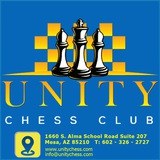13...Qd7?
Lomasov carelessly loses a pawn. He is N0.2 in the Russian Under-16.
14.Qg5! Ne4 15.N×e4 B×e4 16.N×e5! Qf5 17.Q×f5 N×f5 18.Ng4 +/-
Lomasov carelessly loses a pawn. He is N0.2 in the Russian Under-16.
14.Qg5! Ne4 15.N×e4 B×e4 16.N×e5! Qf5 17.Q×f5 N×f5 18.Ng4 +/-
7.a4
This Queen-side advance (a4-a5) makes c4 stronger for White (cause then Black won't have Nb6-Nd5 after ...dxc4).
7...Nh6 8.a5 Nf5 9.c3 Be7 10.g4 Nh4 11.N×h4 B×h4 12.f4
This Queen-side advance (a4-a5) makes c4 stronger for White (cause then Black won't have Nb6-Nd5 after ...dxc4).
7...Nh6 8.a5 Nf5 9.c3 Be7 10.g4 Nh4 11.N×h4 B×h4 12.f4
15...Nd7!
A good maneuver to transfer the knight to c6, in order to put pressure on the a5-pawn. Also in some cases, The knight on a5 can move to d4.
16.Qe2 Nb8 17.Nb6 Rc5 18.Rfd1 Nc6 19.Nca4 R×a5 20.c4 Qb8 21.b3 Bd8 -/+
A good maneuver to transfer the knight to c6, in order to put pressure on the a5-pawn. Also in some cases, The knight on a5 can move to d4.
16.Qe2 Nb8 17.Nb6 Rc5 18.Rfd1 Nc6 19.Nca4 R×a5 20.c4 Qb8 21.b3 Bd8 -/+
20.R×h7!!
A beautiful winning combination by Riazantsev.
20...K×h7 21.Qh5+ Kg8 22.Q×f7+ Kh7 23.B×e4+ d×e4 24.Ba5! Q×a5 25.Qh5+ Kg8 26.Q×e8+ Kh7 27.Q×e7 +-
A beautiful winning combination by Riazantsev.
20...K×h7 21.Qh5+ Kg8 22.Q×f7+ Kh7 23.B×e4+ d×e4 24.Ba5! Q×a5 25.Qh5+ Kg8 26.Q×e8+ Kh7 27.Q×e7 +-
White has no weaknesses. Black has two – c5 and c6. White's e2-bishop and knight should be working in that direction, so some reorganization is necessary.
19.Nd2!
The knight is going to c5 via e4 and the bishop is coming to f3.
19...a4 20.Bf3 Ra6 21.Ne4 Be7 22.a3! Preparing Bb4. 22...Ra7?! 23.Bb4! White is close to winning.
19.Nd2!
The knight is going to c5 via e4 and the bishop is coming to f3.
19...a4 20.Bf3 Ra6 21.Ne4 Be7 22.a3! Preparing Bb4. 22...Ra7?! 23.Bb4! White is close to winning.
19.Nxd4!
The point. Black has no alternative but to part with two pawns for the exchange, after which White's domination of the light squares gives him a clear advantage. Please note the enormous advantage the opposite-colored bishops are to White in this position. (19.Rcc1 c5! would not be better for White)
19...Bxc6 20.Nxc6 Rce8 Probably the only move. 21.Rc1 f5 22.Nd2 Nf6 23.Nxa7 +/-.
The point. Black has no alternative but to part with two pawns for the exchange, after which White's domination of the light squares gives him a clear advantage. Please note the enormous advantage the opposite-colored bishops are to White in this position. (19.Rcc1 c5! would not be better for White)
19...Bxc6 20.Nxc6 Rce8 Probably the only move. 21.Rc1 f5 22.Nd2 Nf6 23.Nxa7 +/-.
Unity Chess Multiple Choice 425
A: Bg7 – 4
👍👍👍👍👍👍👍 50%
B: B×f3 – 2
👍👍👍👍 25%
C: Rc5 – 2
👍👍👍👍 25%
👥 8 people voted so far.
A: Bg7 – 4
👍👍👍👍👍👍👍 50%
B: B×f3 – 2
👍👍👍👍 25%
C: Rc5 – 2
👍👍👍👍 25%
👥 8 people voted so far.
Unity Chess Multiple Choice 426
C: Ba6 – 5
👍👍👍👍👍👍👍 63%
A: Rec8 – 2
👍👍👍 25%
B: d4 – 1
👍 13%
👥 8 people voted so far.
C: Ba6 – 5
👍👍👍👍👍👍👍 63%
A: Rec8 – 2
👍👍👍 25%
B: d4 – 1
👍 13%
👥 8 people voted so far.
The Soviet, and later (from 1948) Canadian master, Fyodor Bogatyrchuk (b. 1892, Kiev, d. 1984, Ottawa). He had a lifetime score of +3,-0,=1 against Mikhail Botvinnik.
@UnityChess
@UnityChess
At the 1982 FIDE Interzonal Tournament in Moscow. In the 2nd round, played on the 8th September, Yaakov Murey (Israel) faces Efim Geller (USSR). The game ended in a draw in 29 moves.
@UnityChess
@UnityChess
